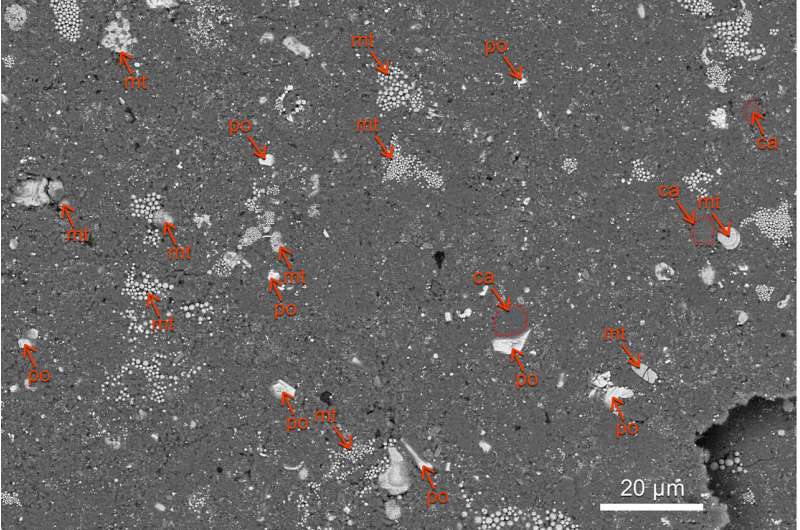Analysis of gases recovered from asteroid Ryugu by Hayabusa2 spacecraft

Three international teams of researchers studying samples of gases recovered by the Hayabusa2 spacecraft from the near-Earth asteroid Ryugu have published their results. The first studied the asteroid's volatile sources and recent surface evolution. The second looked at its nucleosynthetic heritage. And the third team provided an overview of the types of gases that were returned. The first team has published their results in the journal Science; the second and third teams have both have published their results in the journal Science Advances.
The first team found that the asteroid still had noble gases and isotopes from the early days of the solar system, along with a nitrogen composition, which they describe as similar to Ivuna-type carbonaceous chondrites. They also found evidence that one of the noble gases was created by the solar wind and another via irradiation of galactic cosmic rays. And they also found what they describe as a "close" relationship been CI chondrites and gas from Ryugu.
The second team found that some of the samples from Ryugu had Fe isotopic irregularities that were the same as those found in other Ivuna-type (CI) chondrites. They also found iron isotopes that must have formed in places where there were no carbonaceous asteroids. And that, they note, suggests that Ryugu may have come from farther away in the solar system than has been theorized. They suggest it could have come from as far away as beyond the orbits of Saturn or Jupiter. They noted that the growth and migration paths of the giant planets had a destabilizing effect on planetesimals, some of which ejected material into the main belts, which could have included Ryugu.
The third team identified all of the gases that were brought back and measured the amounts of each. They also noted their extraterrestrial origin. They found that some of the helium that had been captured came from the solar wind and some of it leaked in from the Earth's atmosphere as the craft carrying it made its way home. They conclude by reiterating the fact that the gases collected on the project represent the first from a near-Earth asteroid.Scientists discover the source of one of the rarest groups of meteorites
Ryuji Okazaki, First asteroid gas sample delivered by the Hayabusa2 mission: A treasure box from Ryugu, Science Advances (2022). DOI: 10.1126/sciadv.abo7239. www.science.org/doi/10.1126/sciadv.abo7239
Timo Hopp, Ryugu's nucleosynthetic heritage from the outskirts of the Solar System, Science Advances (2022). DOI: 10.1126/sciadv.add8141. www.science.org/doi/10.1126/sciadv.add8141
Journal information: Science Advances
© 2022 Science X Network
No comments:
Post a Comment